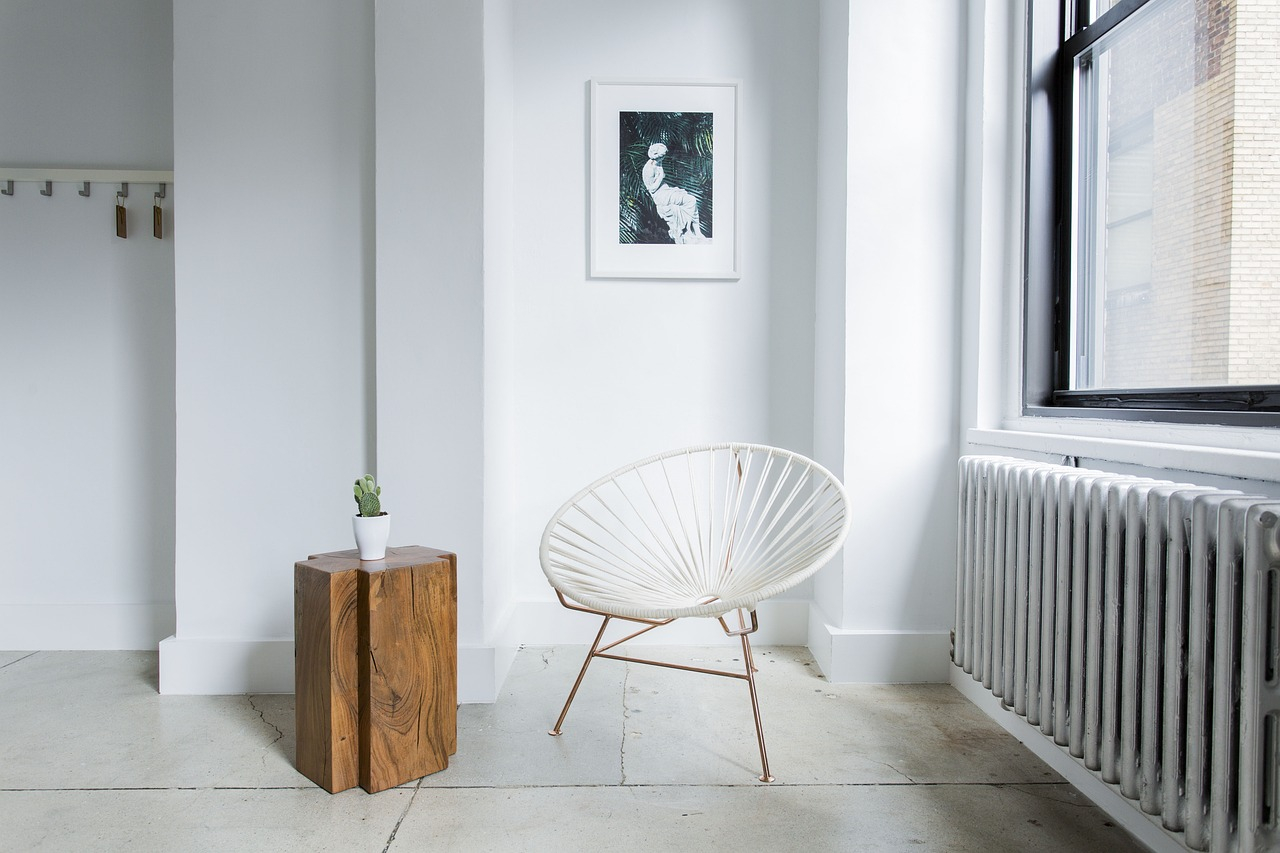Why choose microcement for your interior design?
When it comes to transforming your living space, microcement is a game-changer. This versatile material offers a sleek, modern aesthetic that can elevate any room. But why should you consider incorporating microcement into your interior design scheme? Here are some compelling reasons:
-
Durability and longevity: Microcement is incredibly durable, making it perfect for high-traffic areas like kitchens and bathrooms. Unlike traditional materials, it doesn't crack or chip easily, ensuring your space looks pristine for years.
-
Seamless finish: One of the standout features of microcement is its ability to create a seamless finish. This not only enhances the visual appeal but also makes cleaning and maintenance a breeze. Say goodbye to grout lines and hello to a smooth, continuous surface.
-
Versatility: Whether you're aiming for an industrial look or a minimalist vibe, microcement can adapt to various styles. It can be applied to floors, walls, countertops, and even furniture, offering endless design possibilities.
Incorporating microcement into your interior design isn't just about aesthetics; it's about making a smart, long-term investment. Its durability, seamless finish, and versatility make it a top choice for anyone looking to create a stylish and functional living space. So, if you're ready to take your home to the next level, microcement might just be the perfect solution.
Planning Your Microcement Project
When you're thinking about incorporating microcement into your interior design, it's essential to understand its benefits. This material is renowned for its durability, versatility, and aesthetic appeal. Unlike traditional materials, microcement can withstand heavy use, making it perfect for high-traffic areas. Its versatility allows it to be applied on various surfaces, including floors, walls, and even furniture, providing a seamless and modern look. The aesthetic appeal of microcement is undeniable; it offers a sleek, contemporary finish that can transform any space. Microcement is not just about looks; it's also about functionality. You can use it in a variety of spaces:
-
Kitchens: Microcement countertops and splashbacks are not only stylish but also resistant to stains and heat.
-
Bathrooms: The waterproof nature of microcement makes it ideal for wet areas like showers and sinks.
-
Living Areas: Create a cohesive look by using microcement on floors and walls, adding a touch of elegance to your living room.
To give you an idea of its potential, consider some successful microcement projects. In one project, a modern kitchen was transformed with microcement countertops and a matching island, creating a unified and sophisticated look. In another, a bathroom was given a spa-like feel with microcement walls and floors, providing a clean and minimalist aesthetic. Moreover, microcement is an eco-friendly choice. It requires fewer raw materials and produces less waste compared to traditional construction methods. Its long-lasting nature means fewer replacements and repairs, contributing to a more sustainable environment. In summary, planning your microcement project involves understanding its benefits, considering its application in various spaces, and recognising its eco-friendly attributes. By doing so, you can create a stunning and sustainable interior design that stands the test of time.
Choosing the right colour and finish
When it comes to planning a microcement project, the first step is to have a clear vision of your interior design scheme. Start by sketching out your ideas and gathering inspiration from various sources. Once you have a solid concept, it's crucial to choose the right contractor. A skilled professional can make or break your project, so do your research, check reviews, and ask for references. The right contractor will guide you through the process, ensuring that your vision is brought to life with precision and expertise.
Understanding the timeline for a typical microcement project is essential for smooth execution. Generally, the process can take anywhere from one to three weeks, depending on the size and complexity of the area. Here's a quick breakdown:
|
Stage |
Timeframe |
Details |
|
Initial consultation |
1-2 Days |
Discussing ideas, budget, and feasibility |
|
Surface preparation |
2-3 Days |
Cleaning, repairing, and priming surfaces |
|
Microcement application |
3-7 Days |
Layering and curing of microcement |
|
Finishing touches |
1-2 Days |
Polishing and sealing |
Before diving into the project, make sure you have a comprehensive checklist. This should include:
-
Defining your design goals and budget
-
Researching and selecting a reputable contractor
-
Scheduling a timeline that works for you
-
Choosing the right colour and finish for your space
-
Ensuring all materials and tools are ready
When it comes to choosing the right colour and finish, consider the overall aesthetic of your space. Microcement offers a wide range of colours and finishes, from matte to glossy, and everything in between. For example, a matte finish can give a room a more subtle, understated look, while a glossy finish can add a touch of elegance and sophistication. Always request samples and test them in your space to see how they interact with your lighting and other design elements.
Incorporating microcement into different interior styles
When it comes to microcement, the variety of colours and finishes available can make your head spin—in a good way! From sleek, industrial greys to warm, earthy tones, the options are endless. But how do you choose the right colour and finish for different rooms? Well, it all boils down to the vibe you want to create. For a modern kitchen, you might opt for a polished, high-gloss finish in a neutral shade. On the other hand, a cosy living room could benefit from a matte finish in a warmer hue. Here's a quick table to help you out:
|
Colour |
Finish |
Best For |
|
Industrial grey |
Polished |
Modern Kitchens |
|
Warm beige |
Matte |
Cosy Living Rooms |
|
Deep charcoal |
Satin |
Chic Bathrooms |
Lighting plays a crucial role in how microcement appears. Natural light can bring out the subtle textures and nuances in the finish, while artificial lighting can either enhance or dull its appearance. For instance, a high-gloss finish might look stunning under bright, natural light but could appear too reflective under harsh artificial lighting. So, always consider the lighting conditions of the room before making your final decision.
Discover Festfloor solutions at https://www.festfloor.com/
Maintenance and care for microcement surfaces
Microcement is a versatile material that can seamlessly blend with various interior design styles, such as industrial, minimalist, and contemporary. Its sleek, modern finish makes it a popular choice for those looking to create a unique and stylish space. For instance, in an industrial setting, microcement can be paired with exposed brick walls and metal fixtures to create a raw, edgy look. In a minimalist design, its smooth, clean lines can enhance the simplicity and elegance of the space. Meanwhile, in a contemporary interior, microcement can be combined with bold colours and modern furniture to create a striking, sophisticated environment. Experts often recommend mixing microcement with other materials like wood and metal to add texture and depth to your design. For example, a microcement floor can be complemented with wooden furniture to create a warm, inviting atmosphere. Similarly, incorporating metal elements, such as stainless steel countertops or iron light fixtures, can enhance the modern, industrial feel of a space. These combinations not only elevate the aesthetic appeal but also add a layer of functionality and durability to your interiors. When it comes to maintenance and care, microcement surfaces are relatively easy to manage, but they do require some attention to keep them looking their best. Regular cleaning with a mild detergent and water is usually sufficient to maintain their appearance. It's also advisable to use protective pads under furniture to prevent scratches and to avoid using harsh chemicals that could damage the surface. By following these simple steps, you can ensure that your microcement surfaces remain stunning and durable for years to come.
Cost considerations and budgeting for microcement
When diving into the world of microcement, it's crucial to understand the cost implications and how to budget effectively. Microcement surfaces are not just about aesthetics; they also require proper maintenance to ensure longevity. Let's break down the essentials. Firstly, cleaning and maintaining microcement surfaces is straightforward but needs consistency. Use pH-neutral cleaning products to avoid damaging the surface. Here are some recommended cleaning products:
-
Neutral floor cleaner
-
Microcement surface protector
-
Non-abrasive microfibre cloths
Common issues like staining or scratches can be addressed with specific solutions. For instance, minor scratches can often be buffed out with a fine abrasive pad, while stains might require a specialised cleaner. Proper care can significantly extend the longevity of microcement. With regular maintenance, you can expect your microcement surfaces to last for many years, maintaining their sleek appearance.
By understanding these cost considerations and planning your budget accordingly, you can enjoy the benefits of microcement without any financial surprises. Remember, investing in quality maintenance products and regular care will pay off in the long run, ensuring your surfaces remain stunning and durable.










